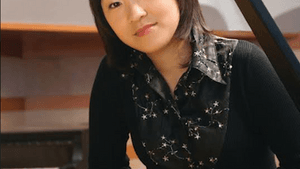Stay in the Loop
BSR publishes on a weekly schedule, with an email newsletter every Wednesday and Thursday morning. There’s no paywall, and subscribing is always free.
Forty fingers flying
Philadelphia Chamber Music Society presents four pianists with two pianos

For their latest offering at the Perelman Theater, the Philadelphia Chamber Music Society recruited four of Philadelphia’s leading pianists and presented a pair of novelties: two pieces for two pianos and eight hands. The result was one of the jollier programs PCMS has presented.
A party at the piano
The piano, harpsichord, and organ are all instruments that can produce several musical lines simultaneously. Put two pianos on the stage and you have a dialogue between two multi-voiced choruses. Put two skilled practitioners at each keyboard and you have two choruses controlled by 40 fingers.
The four pianists chosen for the PCMS events were Charles Abramovic, Lydia Artymiw, Cynthia Raim, and Natalie Zhu. They were the ideal foursome for pieces that demanded high spirited pianists who could collaborate with equally high spirited peers. They’re all soloists with lots of experience playing with chamber groups and accompanying soloists. They had a field day with the exuberant contrasts and eight-handed interactions Bedřich Smetana built into his Sonata in E Minor and Rondo in C Major. The Rondo is a particularly spirited work since it’s essentially an extended polka.
The other two pieces on the program called for two pianos and two pianists — a genre that’s slightly more common than the eight-handed variation. Lydia Artymiw and Cynthia Raim have made a specialty of the form. Their two-piano programs for PCMS always provoke a stab of anticipation when I see them listed on the season schedule. Their performance of Mozart’s Sonata for Two Pianos in D Major maintained the tradition they’ve established. The slow movement seemed a bit long, but it was a beautiful example of the less flamboyant tapestries a composer can create with two keyboards.
When the party's over
The mood changed in the second half when Charles Abramovic and Natalie Zhu joined forces with two Philadelphia Orchestra percussionists, Principal Timpanist Don Liuzzi and Principal Percussionist Chris Deviney. Béla Bartók composed his Sonata for Two Pianos and Percussion in 1937, when the Nazis had taken over his native Hungary and Europe was sliding toward war.
In the notes reprinted in the PCMS program, Bartók describes the sonata in purely musical terms, telling us things like “the exposition presents the principal subject group.” That kind of analysis has its uses, but I have to confess I didn’t feel any great need to follow it as I listened. To me, the two pianos engaged in a poignantly romantic dialogue set against a background dominated by the martial tap of the snare drum and the artillery boom of the timpani.
What, When, Where
Philadelphia Chamber Music Society: Smetana, Sonata in E Minor for Two Pianos, Eight Hands; Rondo in C major for Two Pianos, Eight Hands. Mozart, Sonata for Two Pianos in D Major. Bartok, Sonata for Two Pianos and Percussion. Charles Abramovic, Lydia Artymiw, Cynthia Raim, Natalie Zhu, pianos. Don Liuzzi, Chris Deviney percussion. November 21, 2016 at the Perelman Theater, Kimmel Center for the Performing Arts, 300 S. Broad Street, Philadelphia. (215) 569-8080 or pcmsconcerts.org.
Sign up for our newsletter
All of the week's new articles, all in one place. Sign up for the free weekly BSR newsletters, and don't miss a conversation.